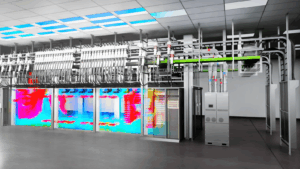
Many of today’s complex IT systems are too difficult to manage manually, causing enterprises endless headaches in cybersecurity breaches, data loss and inefficiency.
There is no option but to turn to automated scripts to manage increasingly complex infrastructure as more enterprises tap on data from multiple sources, said Nigel Kersten, vice-president of ecosystem engineering at software firm Puppet.
The company counts Nasa, Sony and Uber as customers of its solutions, which help automate the many IT tasks, such as providing access to the right individuals in an office or ensuring that servers have the latest version of the software onboard.
As software becomes all the more important in the years ahead, enterprises will need to remove the friction that manual intervention brings, said Kersten, in this month’s Q&A.
NOTE: Responses have been edited for brevity and house style.
Q: There was a rush to the cloud a short while ago and now enterprises are rethinking it. How difficult will a multi-cloud setup make for managing today’s IT infrastructure?
I don’t believe enterprises are rethinking their move to the cloud; it’s undeniable that for many workloads it’s a far cheaper and more efficient way to deliver software than the way on-premise infrastructure has traditionally been managed.
However, we are seeing that the move to cloud has made people realise the value of highly automated environments using tools like Puppet, and that they can get much of this value with their existing environments.
This is leading to not just multi-cloud, but hybrid multi-cloud environments, and automation is the secret to managing this sort of complexity and taking advantage of the best aspects of each cloud provider as well as your on-premise infrastructure.
Q: Complexity is the root cause of so many problems for enterprises now. How are they tackling these issues with automation today?
A: Computers are fundamentally complex. That’s where the power comes from, but the way we manage this complexity is by building higher-level abstractions with simplified interfaces on top of standardised components.
We do this at the operating system layer, we do it with networking, and we do it with applications. Once you’ve got these abstractions with simple interfaces, you can then automate them reliably.
This is the core insight around the space of configuration management and IT automation that Puppet operates in.
Managing a single operating system is complex, managing multiple is even more complex, but good automation tools abstract away these differences so your Linux and Windows systems can be administered via a single interface.
In other words, the more complex the environment is, the more critical automation becomes because a single person cannot manage these systems alone and keep all the context in their head.
Q: When it comes to cyber security, is there a worry that automated scripts and other tools written by third parties may go wrong?
A: The reality is that manually managed environments almost always have a terrible security posture – they’re inconsistently deployed, the situational awareness is poor, and due to lack of automation, they’re slow at responding to threats when they occur.
Automated scripts you’ve written yourself may go wrong but improving your automation capabilities and using widely adopted tools (particularly open source ones) will almost certainly improve your level of security significantly.
Q: One route that digital native enterprises have gone on is DevOps, so security is baked in. How much more difficult is it for a traditional company with decades of IT infrastructure that is hard to replace?
A: You don’t need to replace your infrastructure at all to adopt DevOps practices. The very best approach is an incremental one, where you start automating your existing infrastructure as well as your new deployments.
DevOps is much more than just technical capabilities like configuration management or CI/CD (continuous integration/continuous delivery). It’s about breaking down organisational silos and bringing together previously siloed departments to work together.
It is using automation to remove unnecessary organisational and technical friction in order to improve the reliability and speed of software delivery.






